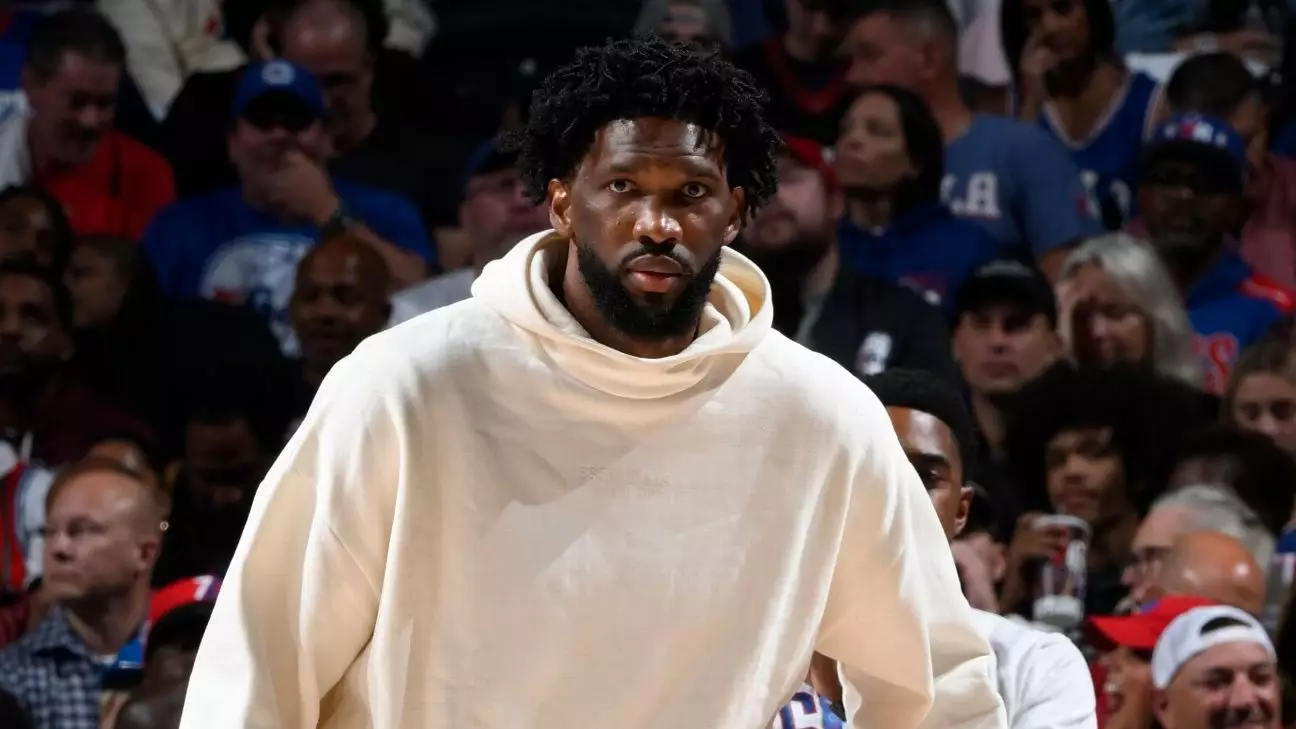In the world of professional sports, where emotions run high and expectations are monumental, the interplay between athletes, media, and personal histories can lead to explosive situations. The recent incident involving Philadelphia 76ers star Joel Embiid and columnist Marcus Hayes serves as a stark reminder of how sensitive athletes can be when their character and personal tragedies are brought into the public domain. This incident, which unfolded after a disappointing loss to the Memphis Grizzlies, highlights not only the challenges athletes face off the court but also raises questions about professional boundaries in sports journalism.
On a night that should have been focused solely on basketball, Joel Embiid found himself embroiled in a confrontation in the locker room. Following the 76ers’ 124-107 defeat, Embiid’s frustrations boiled over after Hayes published a piece in the Philadelphia Inquirer that probed his commitment to the game and included references to both his deceased brother and his son, both named Arthur. This specific mention seemed to strike a personal chord with Embiid, leading to a heated exchange that culminated in physical contact. As the incident unfolded before reporters, it showcased the volatile intersection of personal grief and public scrutiny.
In a statement, an NBA spokesperson confirmed that the league is investigating the altercation, underscoring the seriousness with which such incidents are taken. The response from the league suggests an effort to maintain decorum and manage the emotional complexities of player interactions with media personnel. The incident also prompted comments from 76ers president Daryl Morey, who acknowledged the event’s gravity and indicated that the organization was taking it seriously.
At the core of Embiid’s reaction is a profound emotional burden. The reference to his brother, who passed away, and his young son seems to have crossed a line for him. For many athletes, personal loss is a deeply ingrained aspect of their identity, shaping their motivations and reactions. Players like Embiid are not just representatives of their teams; they are individuals navigating their own histories and challenges.
Moreover, Embiid’s absence from the game—his fifth consecutive miss due to knee injury management—adds another layer of complexity. With an ongoing battle to recover from prior injuries, there is a palpable frustration that athletes experience when they are unable to contribute fully. His assertions regarding the necessity of respecting one’s physical limits resonate strongly in a culture that often prioritizes playing through pain. His history of injuries, including a significant knee surgery, serves as a testament to the lurking dangers of playing at elite levels, and further emphasizes the indelible connection between health and performance.
The escalation of the situation also brings forth pertinent questions about the role of journalism in sports. Athletes, as public figures, are often subject to scrutiny; however, when personal narratives intersect with professional criticism, the ethical lines can become blurred. In the case of Hayes, the choice to weave personal details into a critique of Embiid’s dedication raises eyebrows. Such choices highlight the responsibilities journalists have in reporting on athletes’ lives, as unfiltered commentary can elicit retribution.
Hayes’ apology does little to mend the damage caused, as Embiid made it clear that he finds it unacceptable to involve family tragedies in discussions about sports performance. This incident raises a broader conversation about the need for sensitivity in sports journalism—the impact of words can be profound, and when personal hardships are used for dramatic effect, the results can be destructive.
In sum, the clash between Joel Embiid and Marcus Hayes encapsulates an array of issues extending beyond a mere locker room scuffle. It brings to light the emotional stakes at play for athletes dealing with grief, injury, and public expectations. As the NBA investigates the incident, it becomes crucial for all involved—players, media personnel, and fans—to recognize the human experiences that underpin the spectacle of sports. Respecting the lines between professional critique and personal tragedy could help foster a healthier environment that celebrates both the athletes’ dedication to their craft and the complexities of their lives outside the arena.


Leave a Reply